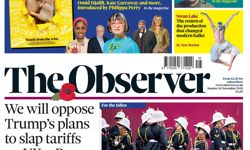Recent research commissioned for the Specialist Media Show, in conjunction with PPA and InPublishing, polled the views of around 200 publishers, split between consumer and b2b, and with a bias towards independent businesses with under £10m turnover, typically operating in specialist markets. They show active experimentation with a range of paid content models and pricing approaches.
Paid online content: high subs rates in some markets
33% are already charging for online content, and of those who aren’t now, 22% plan to do so within the next 2 years.
Of the publishers who are charging, the most popular model (57%) is an annual sub, with 17% charging on a monthly basis and just 10% a one-off fee. Around 30% make an annual charge under £50; with a further 10% charging £50-£100. What is surprising though, is the high number (32%) charging £100-£999 annually.
So it looks like publishers are anticipating paid online content to be a good revenue source.
Digital editions – largely a free add-on for subs, but revenues growing
Over half of all publishers (57%) offer their digital editions free. A further 12.5% bundle them free with paid print subs. Just 16% make a separate charge. Most of those who do charge offer a discount of up to 50% to the print edition. However, almost half of those with paid editions expect subs revenues to grow by over 10% in the next year, and their ad revenues to grow by over 10%.
Mobile apps – poised for rapid growth, increasingly with paid-for models
Much activity in this field, with 22% pioneers already with apps or with launches imminent, over half having launched in the last 12 months. Another 16% plan a launch in the next year and 11% in the medium term.
The most popular business model is a free app (35%), but 15% are sponsored and 23% are paid-for on a one-off charge; while 22% opt for a subscription model. (Respondents could select multiple options).
Tablets & archives seen as subscription opportunities; video/audio as ad plays
Other activity is on the agenda: with 42% planning tablet/e-reader editions, 35% digitised archive and 53% online video or audio content. The preferred model for tablet editions is subscriptions (46%) with some planning one-off payments (17%), sponsorship or ad-funding (14%). Subscription is also the favoured model for archive at 41%, with 14% planning one-off charges and 17% ad-funding or sponsorship. Online video and audio is, however expected to be an ad-funded model, with just 11% planning subscriptions and 3% one-off payments.
So the big subscription revenue bets for publishers appear to be online paid content and mobile / tablet apps and to a lesser extent digital archives, while digital editions and video / audio are seen as more of a sponsorship / ad opportunity.
The full results of this research, including a split of activity between consumer and b2b publishers, and larger and smaller businesses, will be presented at the Specialist Media Conference on 25 May, by Prof Barrie Gunter of University of Leicester and Jim Bilton of Wessenden Marketing.
InPublishing readers who are media owners can benefit from a 15% discount on tickets by using the code EB2 when they book using this link before 11 May 2011.
The research was commissioned by the Specialist Media Show in partnership with InPublishing, PPA, Wessenden Marketing and University of Leicester. The survey was carried out by eDigitalResearch during March 2011.










